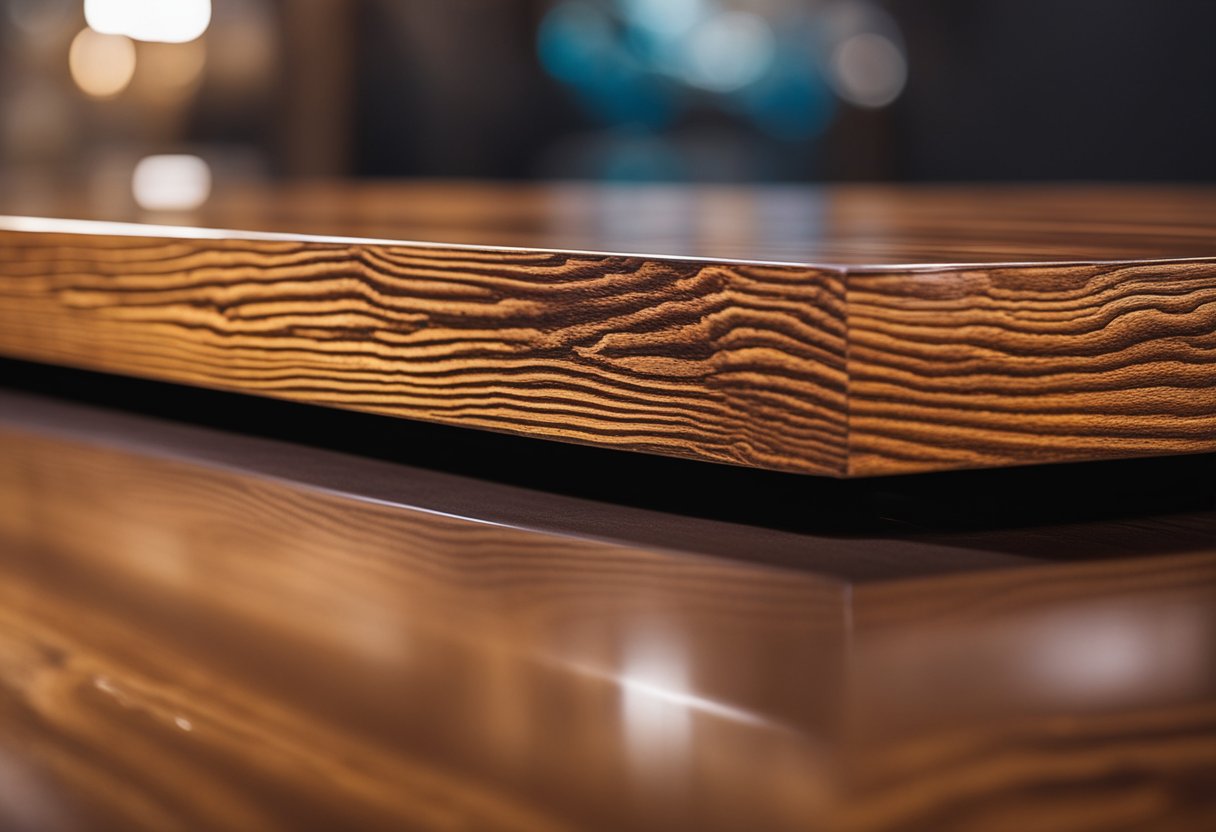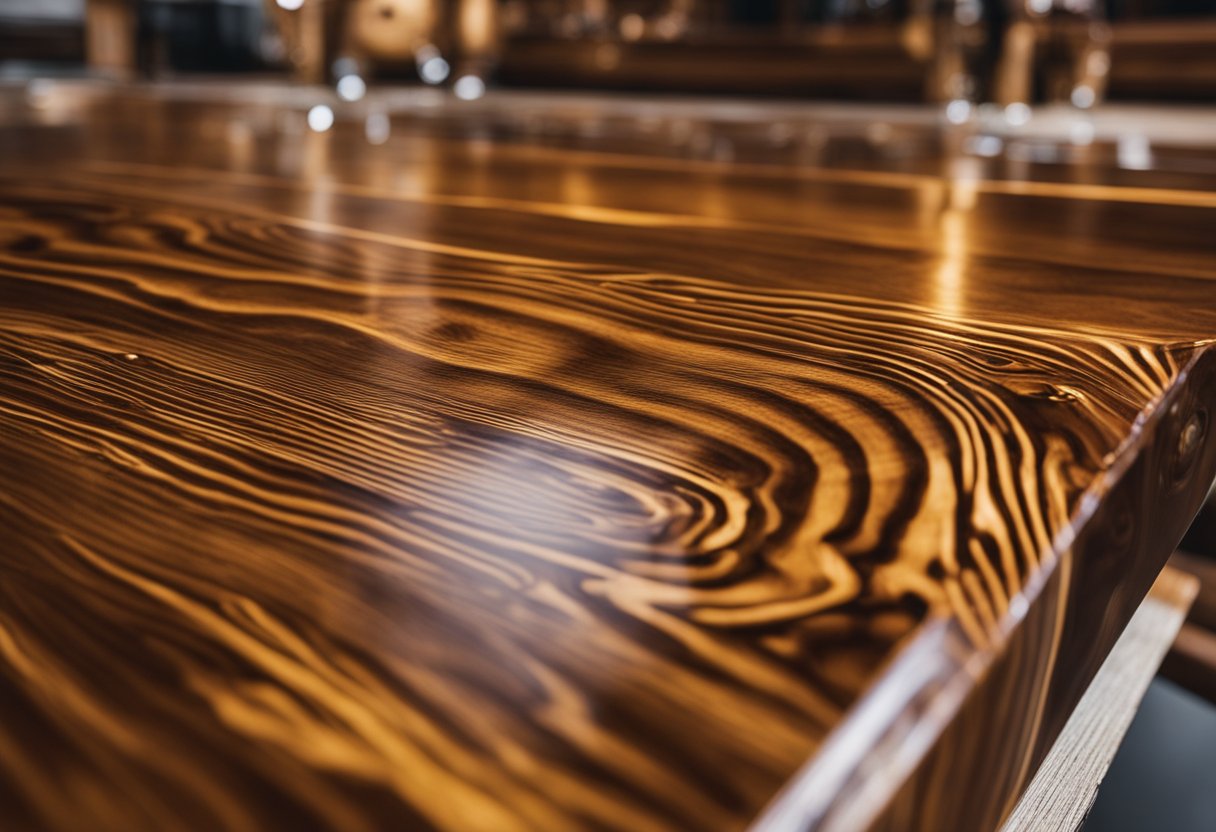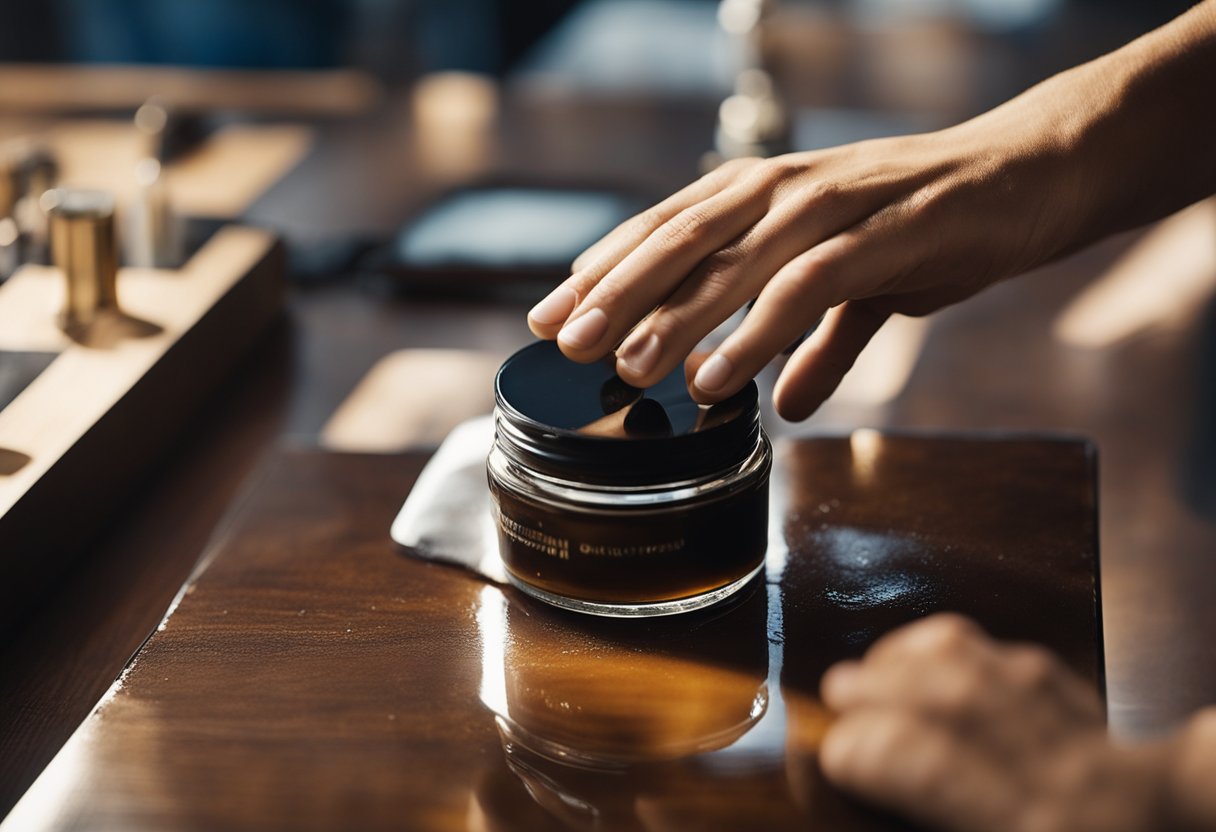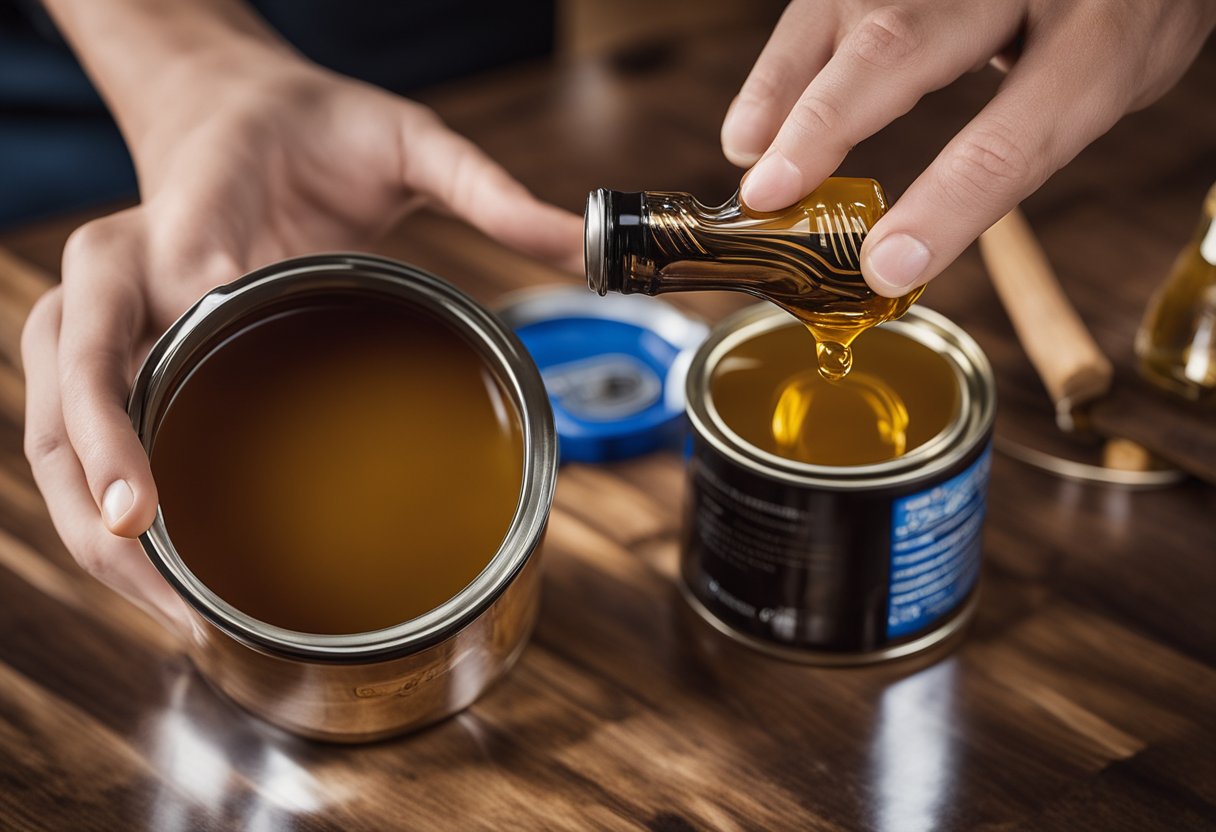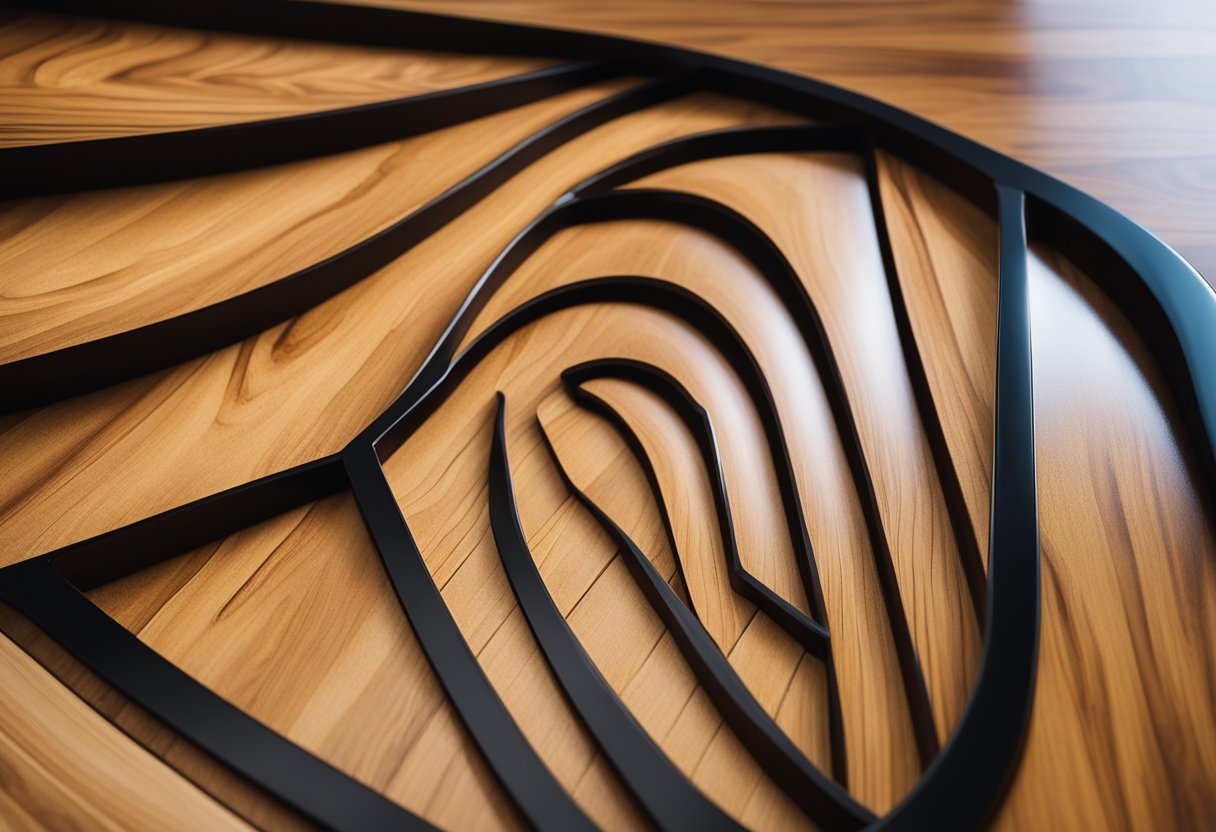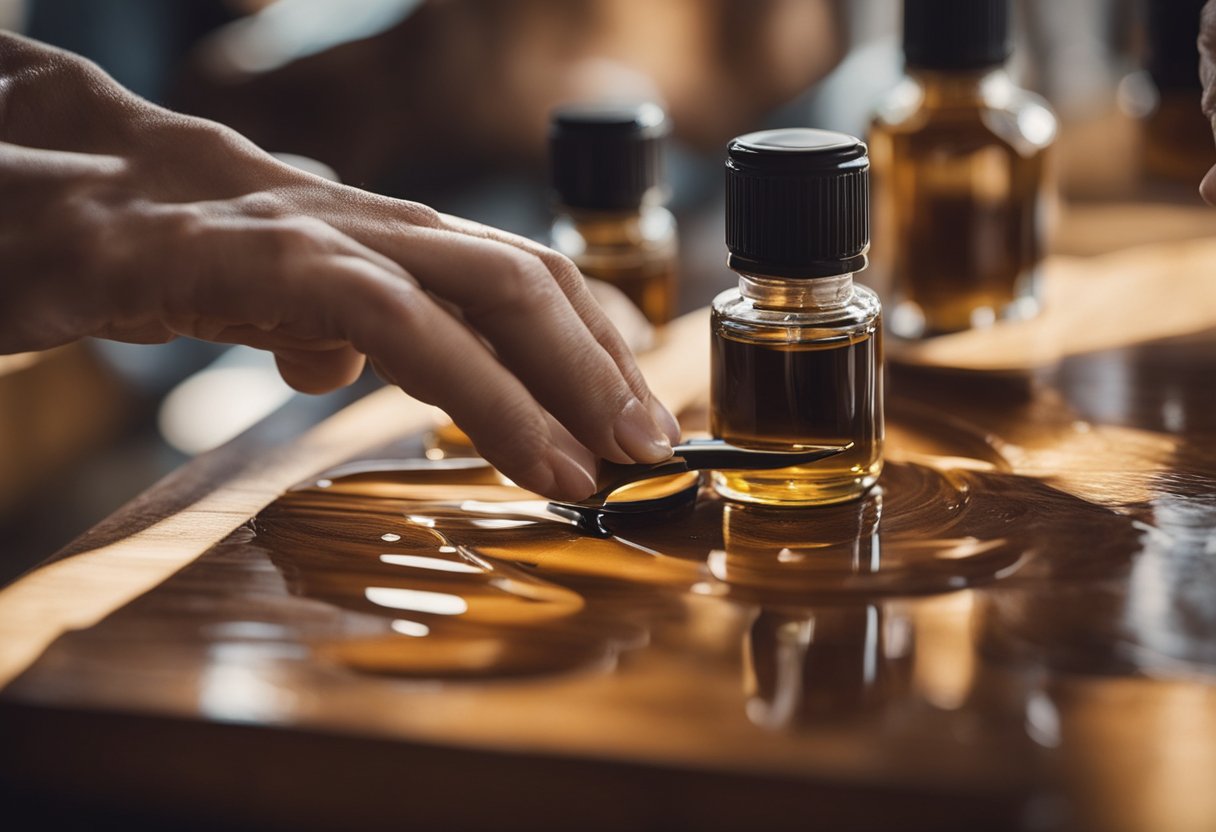I have always been fascinated by the art of woodworking, and the finishes that are applied to wooden surfaces. One such finish that has caught my attention is the combination of tung oil and lacquer. Tung oil is a natural oil that is extracted from the seeds of the tung tree, and is known for its ability to penetrate deep into the wood, providing a natural and long-lasting finish. On the other hand, lacquer is a synthetic finish that is known for its durability and glossiness.
The combination of tung oil and lacquer is a popular choice among woodworkers as it provides the best of both worlds. The tung oil penetrates deep into the wood, providing a natural finish that enhances the wood’s grain and color. The lacquer, on the other hand, provides a durable and glossy finish that protects the wood from scratches and other damage. However, applying lacquer over tung oil can be a tricky process, and requires careful preparation and application to achieve the desired results.
Key Takeaways
- Tung oil and lacquer can be combined to provide a natural and durable finish for wooden surfaces
- Applying lacquer over tung oil requires careful preparation and application
- The combination of tung oil and lacquer provides the best of both worlds, enhancing the natural beauty of the wood while providing durable protection
Understanding Tung Oil and Lacquer
https://www.youtube.com/watch?v=bsjnRcmC840&embed=true
As a woodworker, I have found that understanding the properties of different finishes is crucial to achieving the desired outcome. Two popular finishes that woodworkers often use are tung oil and lacquer. Both finishes have their own unique properties, advantages, and disadvantages.
Tung Oil
Tung oil is a natural oil extracted from the seeds of the tung tree. It is a popular choice among woodworkers because it enhances the natural beauty of the wood by bringing out its grain and color. Tung oil is also known for its water-resistant properties, which make it a great choice for outdoor furniture.
One of the downsides of tung oil is that it takes a long time to cure. It can take up to several weeks to fully cure, and during this time, the surface can be easily scratched or damaged. Tung oil also requires multiple coats to achieve the desired finish, and each coat must be allowed to dry completely before applying the next.
Lacquer
Lacquer, on the other hand, is a synthetic finish that is made from a combination of nitrocellulose, resin, and solvents. It is a popular choice among woodworkers because it dries quickly, is highly durable, and can be easily repaired.
Lacquer is also highly resistant to fading, yellowing, and chipping, making it an ideal choice for high-traffic areas or pieces of furniture that will be subject to frequent use. However, lacquer is less water-resistant than tung oil, and it can be more difficult to apply, requiring proper ventilation and protective gear.
In conclusion, both tung oil and lacquer have their own unique properties and advantages. As a woodworker, it is important to understand the differences between these finishes and choose the one that best suits your project.
The Process of Applying Lacquer Over Tung Oil
https://www.youtube.com/watch?v=bbiXJd_1l8Y&embed=true
When it comes to applying lacquer over tung oil, there are a few things you need to keep in mind to ensure a smooth and successful process. Here is a step-by-step guide to help you through the process:
-
Prepare the Surface: Before you begin applying lacquer over tung oil, make sure the surface is clean and free of debris. Sand the surface with fine-grit sandpaper to create a smooth and even surface. Wipe the surface clean with a tack cloth to remove any dust or debris.
-
Apply the Lacquer: Apply the lacquer using a spray gun or brush. If you are using a spray gun, make sure to use a fine nozzle to ensure an even application. Apply a thin coat of lacquer and allow it to dry completely before applying additional coats.
-
Sand Between Coats: Sand the surface lightly with fine-grit sandpaper between each coat of lacquer. This will help to create a smooth and even surface and ensure good adhesion between coats.
-
Apply Multiple Coats: Apply multiple coats of lacquer until you achieve the desired finish. Allow each coat to dry completely before applying the next coat.
-
Finish with a Final Sanding: Once you have applied all the coats of lacquer, sand the surface lightly with fine-grit sandpaper to create a smooth and even finish. Wipe the surface clean with a tack cloth to remove any dust or debris.
When applying lacquer over tung oil, it is important to use the right tools and techniques to ensure a successful finish. By following these steps, you can achieve a beautiful and durable finish that will protect and enhance the natural beauty of your wood surface.
The Science Behind Finishing
As a woodworker, I understand the importance of finishing a project. A good finish not only protects the wood from damage but also enhances its beauty. The science behind finishing is fascinating and complex. I will try to explain it in simple terms.
The primary purpose of a finish is to protect the wood from moisture, heat, and other environmental factors. Finishes also help to enhance the wood’s natural beauty by bringing out its color, grain, and texture.
There are two types of finishes: film-forming and penetrating. Film-forming finishes, such as lacquer and polyurethane, create a hard, protective layer on top of the wood. Penetrating finishes, such as tung oil and linseed oil, penetrate the wood and harden from within.
Drying oils, such as tung oil and linseed oil, harden when exposed to air. They polymerize, or form long chains, which create a hard surface on the wood. However, drying oils take a long time to cure, sometimes weeks or even months.
Lacquer, on the other hand, dries quickly and cures even faster. It hardens by evaporation of the solvent, which leaves behind a hard, protective layer. Lacquer is a film-forming finish that can be applied over a cured drying oil finish.
In conclusion, understanding the science behind finishing is essential for achieving a good result. Whether you choose a penetrating or film-forming finish, make sure it is compatible with the wood and the previous finish. Remember that drying oils take a long time to cure, and lacquer should be applied only after the previous finish has cured.
Benefits of Lacquer Over Tung Oil
https://www.youtube.com/watch?v=srBrsGc-AFQ&embed=true
As a woodworker, I have experimented with various finishes to protect and enhance the beauty of my projects. One of the most popular finishes is tung oil, a natural oil extracted from the tung tree. While tung oil provides a beautiful finish, it may not be the best option for every project. In some cases, lacquer may be a better choice. Here are some benefits of lacquer over tung oil:
Hardness
Lacquer is a harder finish than tung oil, making it more resistant to scratches and dents. This is especially important for high-traffic areas, such as kitchen table tops. Lacquer also dries faster than tung oil, allowing for quicker project completion.
Durability
Lacquer is highly resistant to fading, yellowing, and chipping, making it an ideal choice for furniture that will be subject to frequent use. It also provides a more consistent finish than tung oil, which can vary in appearance depending on the wood and number of coats applied.
Protection
Lacquer provides a barrier between the wood and the environment, protecting it from moisture, heat, and UV rays. This makes it a great choice for outdoor furniture or items that will be exposed to sunlight.
In summary, while tung oil provides a beautiful finish, lacquer offers greater hardness, durability, and protection. It is important to note that lacquer should only be applied to fully cured tung oil finishes, as the solvents and thinners in lacquer may react with an oil-based finish that is not fully cured.
Eco-Friendly and Food-Safe Finishes
https://www.youtube.com/watch?v=CcL2TE3T-po&embed=true
As a woodworker, I am always on the lookout for finishes that are both eco-friendly and food-safe. These finishes are not only better for the environment but also safer for me and my clients.
One of my favorite eco-friendly finishes is tung oil. Made from the nut of the tung tree, this oil is a natural and renewable resource that is free of toxic chemicals. It is also easy to apply and penetrates deeply into the wood, providing a warm, protective finish that highlights the grain patterns of the wood.
Another great option for eco-friendly and food-safe finishes is linseed oil. This oil is made from flax seeds and is also a natural and renewable resource. It is easy to apply and dries to a hard, durable finish that is resistant to water and stains. Walnut oil is another food-safe option that is easy to apply and provides a beautiful, natural finish.
When it comes to food-safe finishes, it is important to note that not all finishes are created equal. Some finishes, such as lacquer, are not food-safe and should not be used on surfaces that come into contact with food. However, there are many food-safe finishes available, such as tung oil, linseed oil, and walnut oil, that are perfect for cutting boards, bowls, and other kitchen items.
In conclusion, when choosing finishes for your woodworking projects, it is important to consider both eco-friendliness and food-safety. Tung oil, linseed oil, and walnut oil are all great options that are both eco-friendly and food-safe.
Comparing Lacquer with Other Finishes
https://www.youtube.com/watch?v=uUtccpFNTc4&embed=true
When it comes to finishing wood, there are several options available, and each has its own unique properties. In this section, I will compare lacquer with some of the other popular finishes such as varnish, shellac, varnish blend, polyurethane, and Danish oil.
Varnish
Varnish is a popular finish that has been used for centuries. It is made by combining oil, resin, and solvents. Varnish is known for its durability and resistance to water and heat. However, it can take a long time to dry, and it can yellow over time.
Shellac
Shellac is a natural finish that is made from the resin secreted by the lac bug. It is known for its clarity and fast drying time. However, it is not as durable as other finishes and can be damaged by water and heat.
Varnish Blend
Varnish blend is a combination of varnish and tung oil. It is known for its durability and resistance to water and heat. However, it can take a long time to dry and can yellow over time.
Polyurethane
Polyurethane is a synthetic finish that is known for its durability and resistance to water and heat. It is available in both oil-based and water-based formulas. However, it can be difficult to apply and can take a long time to dry.
Danish Oil
Danish oil is a blend of oil and varnish that is known for its ease of application and fast drying time. It provides a natural look to the wood and is resistant to water and heat. However, it is not as durable as other finishes and may need to be reapplied more frequently.
Lacquer
Lacquer is a synthetic finish that is known for its durability, clarity, and fast drying time. It can be applied over other finishes such as tung oil, as long as the surface has been sanded and cleaned properly. Lacquer is resistant to water and heat and provides a high gloss finish. However, it can be difficult to apply and can be damaged by alcohol and other solvents.
Overall, each finish has its own unique properties and advantages. The choice of finish depends on the type of wood, the desired look, and the level of durability required.
Preventing and Repairing Surface Damage
As with any protective finish, it is important to take precautions to prevent surface damage. Scratches, chipping, and other forms of damage can occur if the surface is not properly cared for. Here are some tips to prevent surface damage:
- Avoid dragging heavy objects across the surface as this can cause scratches.
- Use coasters or placemats to protect the surface from heat and moisture.
- Wipe up spills immediately to prevent water damage.
- Use furniture pads under heavy objects to prevent indentations.
If surface damage does occur, it is important to repair it as soon as possible to prevent further damage. Here are some tips for repairing surface damage:
- For small scratches, use a furniture touch-up marker that matches the color of the finish.
- For larger scratches or chips, use a wood filler that matches the color of the finish. Apply the filler with a putty knife, let it dry, and sand it smooth.
- For deep scratches or gouges, use a wood patch. Apply the patch with a putty knife, let it dry, and sand it smooth.
- For areas where the finish has worn away, lightly sand the area and apply a new coat of tung oil. Wait at least 24 hours before applying a new coat of lacquer.
By following these tips, you can help prevent surface damage and keep your furniture looking beautiful for years to come.
Choosing the Right Finish for Your Project
When it comes to finishing a woodworking project, choosing the right finish can be a daunting task. There are many options available, each with their own unique properties and benefits. One popular choice for protecting and enhancing the beauty of a bare wood surface is Tung oil. However, it may not be the best choice for every project.
Before deciding on a finish, it’s important to consider the project itself. What type of wood is being used? What is the intended use of the finished product? Is the project an indoor or outdoor piece? These are all important factors to consider when choosing a finish.
Tung oil is a popular choice for many woodworking projects because of its durability, water resistance, and color stability. It’s also easy to apply and dries quickly. However, it may not be the best choice for outdoor pieces or pieces that will be exposed to high levels of wear and tear.
If you’re looking for a finish that is more durable and scratch-resistant, lacquer may be a better choice. Lacquer is a hard, durable finish that dries quickly and can be applied in multiple coats. It’s also resistant to moisture and chemicals, making it a great choice for outdoor pieces or pieces that will be exposed to harsh conditions.
When choosing a finish, it’s important to consider the type of project and the intended use of the finished product. Tung oil is a great choice for many woodworking projects, but it may not be the best choice for every project. Lacquer is a great alternative that offers durability and scratch-resistance, making it a great choice for outdoor pieces or pieces that will be exposed to harsh conditions.
Maintaining Your Lacquer Over Tung Oil Finish
Maintaining your lacquer over tung oil finish is essential to ensure its longevity. Here are some tips to help you keep your finish in top condition:
Regular Cleaning
Regular cleaning is essential to keep your finish looking its best. You can use a soft, damp cloth to wipe down your furniture. Avoid using harsh chemicals or abrasive cleaners, as they can damage the finish. If you need to remove stubborn stains, use a mild soap and water solution.
Avoid Heat Exposure
Heat exposure can damage your lacquer over tung oil finish. Avoid placing hot items directly on your furniture, as this can cause the finish to bubble or crack. Always use coasters or trivets to protect your furniture from heat.
Avoid Water Exposure
Water exposure can also damage your lacquer over tung oil finish. Avoid placing wet items directly on your furniture, as this can cause water stains. If you spill water on your furniture, wipe it up immediately with a dry cloth.
Resins
Lacquer over tung oil finish contains resins that help to create a hard, durable finish. These resins can become brittle over time, especially in cold temperatures. If your furniture is exposed to extreme cold, it may cause the finish to crack. To avoid this, keep your furniture in a temperature-controlled environment.
Water Resistance
Lacquer over tung oil finish is not completely water-resistant. If you spill water on your furniture, wipe it up immediately with a dry cloth. If you need to clean your furniture, use a damp cloth and a mild soap solution. Avoid using harsh chemicals or abrasive cleaners, as they can damage the finish.
Film Finish
Lacquer over tung oil finish creates a film finish that can be sanded and polished. If your finish becomes dull over time, you can use a fine-grit sandpaper to remove any scratches or imperfections. After sanding, you can apply a fresh coat of lacquer to restore the shine.
Frequently Asked Questions
Can you varnish over oiled wood?
Yes, you can varnish over oiled wood. However, it is important to make sure that the oil finish is completely dry before applying the varnish. If the oil finish is not dry, it can affect the adhesion of the varnish, resulting in a poor finish.
Can I put lacquer over varnish?
Yes, you can put lacquer over varnish. However, it is important to make sure that the varnish is completely dry before applying the lacquer. If the varnish is not dry, it can affect the adhesion of the lacquer, resulting in a poor finish.
Danish oil and varnish
Danish oil is a blend of oil and varnish that is used to protect and enhance the beauty of wood surfaces. It is possible to apply varnish over Danish oil, but it is important to make sure that the Danish oil is completely dry before applying the varnish.
Can you put mineral oil over polyurethane?
Mineral oil can be used as a lubricant and protectant for wood surfaces, but it should not be applied over polyurethane. Polyurethane is a hard, durable finish that creates a barrier between the wood and the environment. Applying mineral oil over polyurethane can affect the adhesion of the finish and result in a poor finish.
What is the best finish over tung oil?
Tung oil is a natural oil that is used to protect and enhance the beauty of wood surfaces. The best finish over tung oil is a clear coat, such as lacquer or polyurethane. Clear coats provide a hard, durable finish that protects the wood surface from scratches, stains, and other damage.
Can you clear coat over tung oil?
Yes, you can clear coat over tung oil. Clear coats, such as lacquer or polyurethane, provide a hard, durable finish that protects the wood surface from scratches, stains, and other damage. However, it is important to make sure that the tung oil is completely dry before applying the clear coat.

Hi, I’m Sal Muller of Tooltrip.com. My DIY experience led me to understand essential power tools for home projects. Tooltrip.com guides enthusiasts and professionals in choosing right tools for any job. I provide concise top tool reviews for easier, efficient DIY.

